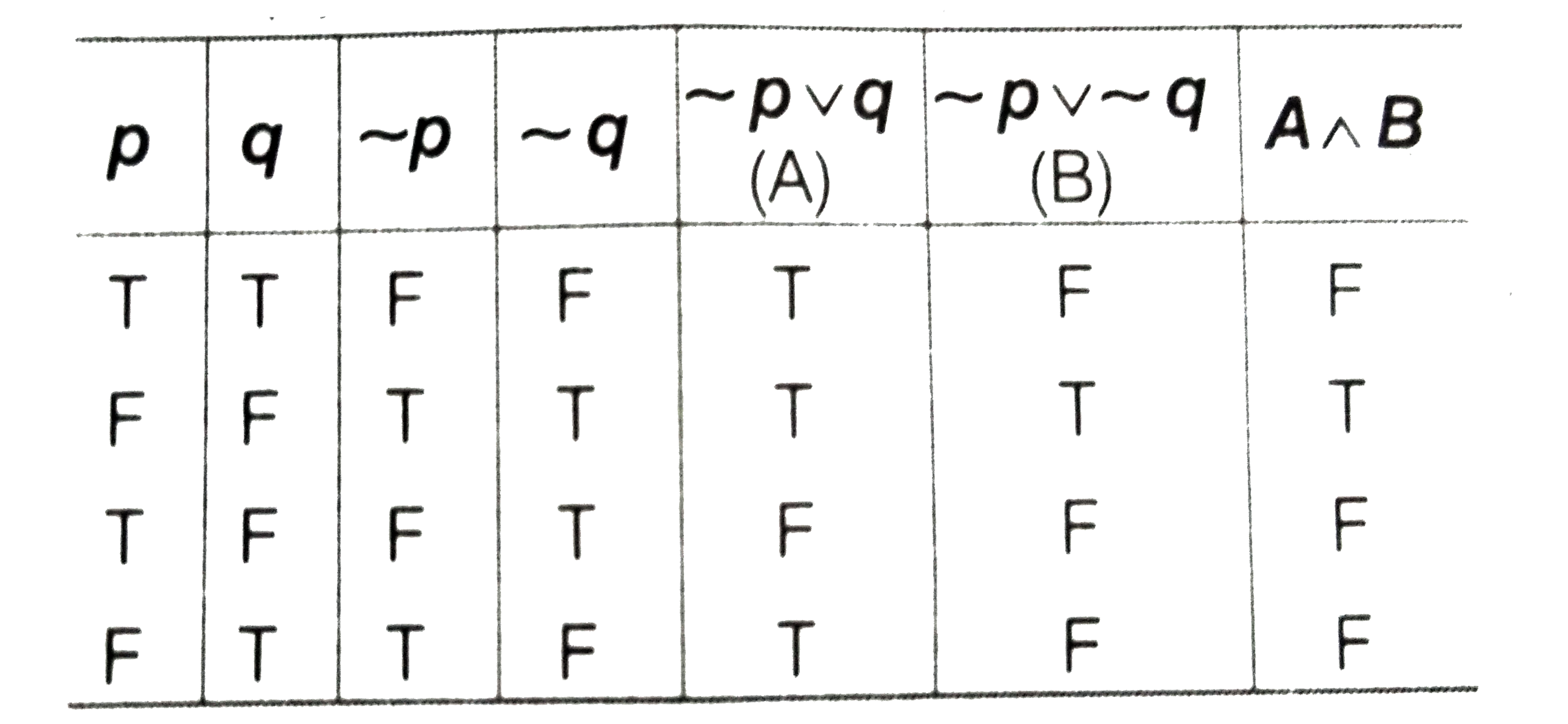Let p and q be two statements. Then, (~p∨q)∧(~p∧~q) is a
A
tautology
B
contradiction
C
neither tautoloty nor contradiction
D
both tautology and contradiction
Video Solution
Text Solution
The correct Answer is:C

It is clear from the table that it is neigher tautology nor contradiction.
|
Updated on:21/07/2023
Topper's Solved these Questions
Similar Questions
Knowledge Check
- Question 1 - Select One
Let p and q be two statements, then (p∨q)∨~p is
AtautologyBcontradictionCBoth (a) and (b)DNone of these - Question 2 - Select One
(p∧~q)∧(~p∨q) is
Aa contradictionBa tautologyCEither (a) or (b)DNeigher (a) nor (b) - Question 3 - Select One
Let p and q be two statements, then ~p→q∧(~q) is equivalent to
ApBp∧qCqDp ∨q
Let P and q be two statements,
then ~(~p∧q)∧(p∨q) is
logically equivalent toView SolutionIf p and q are two statements, then p∨~(p⇒~q) is equivalent to
View SolutionIf p and q are tow statements, then ~(p∧q)∨~(q⇔p) is
View SolutionSuppose p and q are two statements, then ~[p→(p∨~q)] is equivalent to
View SolutionLet p : 7 is not greater than 4 and q : Paris is in France
be two statements. Then, ~(p∨q) is the statementView Solution

